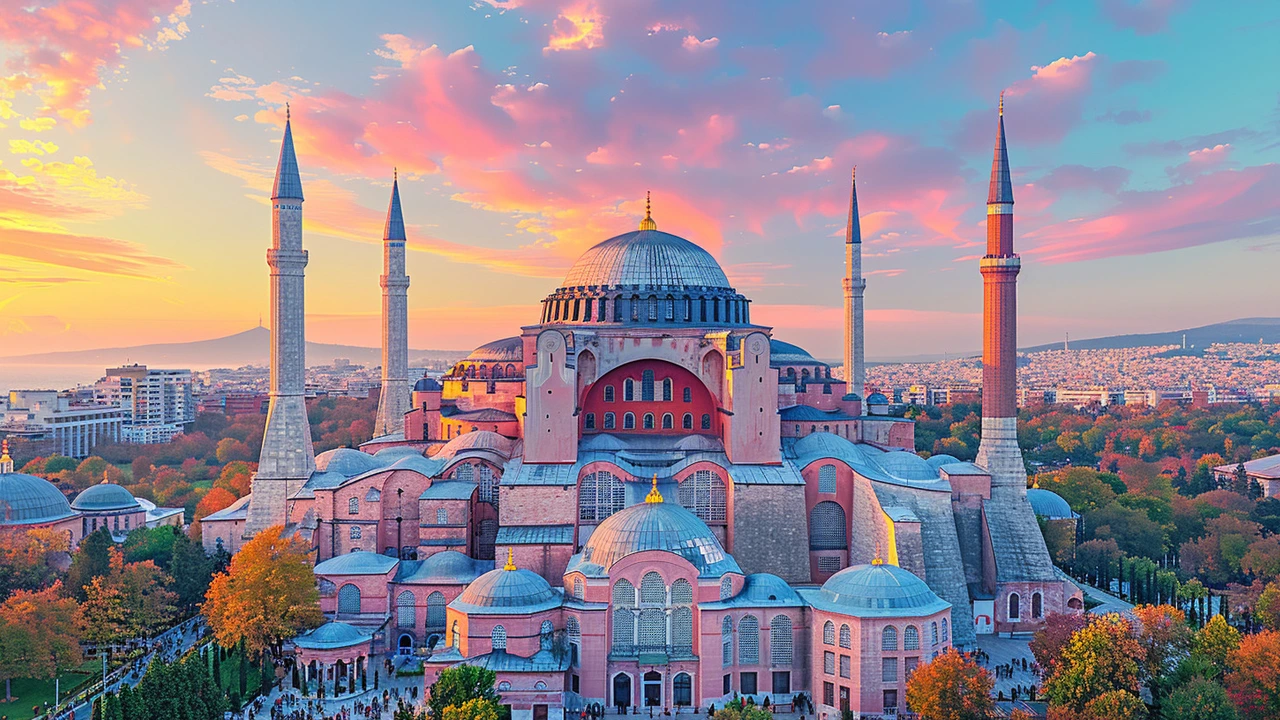Byzantine Empire: Why its buildings and art still matter
The Hagia Sophia’s dome held the world’s record for almost a thousand years. That fact alone explains why the Byzantine Empire still matters when we talk about architecture and religious art. This tag collects posts and guides that show how a mix of Roman engineering and Eastern taste created a style you can spot across Europe and the Mediterranean.
Key features to spot
Look for big domes, often set on pendentives (those curved triangular supports). You’ll see interiors lit from hidden windows, making gold mosaics glow. Walls might be thin brick with marble veneers and bold color contrasts. Churches often mix a central-plan dome with a long nave — a blend of the classical basilica and a new, centralized worship space. Iconic decorations include tiny glass tesserae, stylized saints, and repeated geometric patterns rather than natural landscapes.
Construction techniques matter: Byzantines used lighter materials and clever vaulting to float huge domes above open spaces. That allowed interiors to feel more like a single, unified room rather than a set of separate chambers. Also watch for reused Roman columns and carved capitals — builders often recycled materials, which gives many sites a layered, lived-in look.
Where to see Byzantine art and architecture today
Istanbul is the obvious place: Hagia Sophia and the Chora Church offer textbook examples of grand structure plus shimmering mosaics. Ravenna in Italy holds early Byzantine mosaics that are unusually well preserved. In Greece, sites like Hosios Loukas and Thessaloniki show regional variations you’ll want to compare. Mount Athos and Cyprus preserve religious traditions and fresco cycles that feel almost unchanged.
Want a practical tip for visiting? Go early or late in the day for softer light inside domes — mosaics and gilding look best then. Many churches have low light and strict photography rules, so bring a fast lens or high-ISO settings on your camera and be ready to put the flash away. Wear shoes with good traction; old stone floors can be slippery.
Curious about influence? Byzantine ideas traveled. Venetian and Russian churches borrowed the dome-and-cupola language, and Ottoman architects adapted dome construction into mosques. In art, icons shaped Eastern Orthodox worship and still play a central role in religious life.
If you want reading that helps connect the dots, check the pieces in this tag on Macklowe Art & Architecture. They break down technical terms, show travel tips, and point to lesser-known sites worth a detour. Whether you’re planning a trip or just want to recognize a Byzantine church in a photo, these posts make the style clear and useful.
See a dome, follow the mosaics, and you’ll spot Byzantine traces in places you didn’t expect — from small village chapels to grand city cathedrals. That’s the real legacy: a visual language that kept evolving and still speaks to people today.

Exploring the Wonder of Byzantine Architecture: A Comprehensive Review
Discover the rich and elaborate world of Byzantine architecture. This captivating style combines artistic flair and engineering marvels, reflective of the empire's power and religion. Explore iconic structures, key features, and their lasting impact on architecture.
Read more